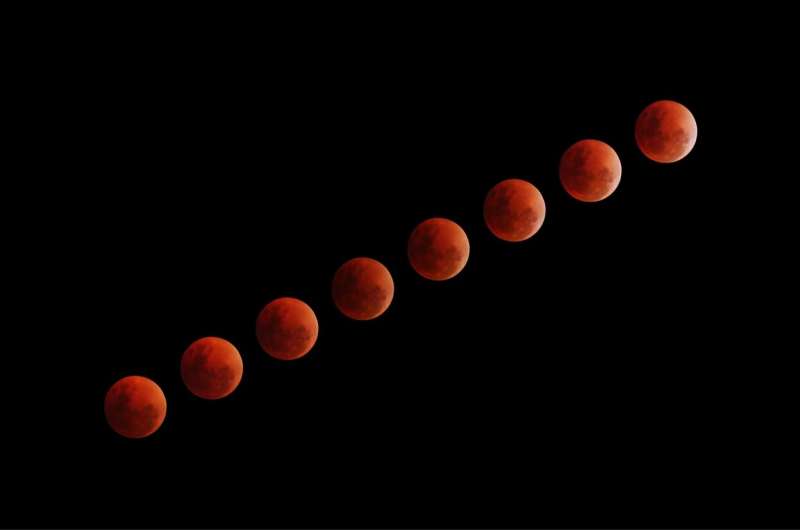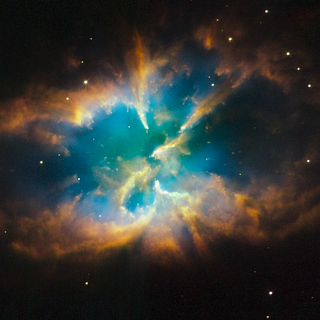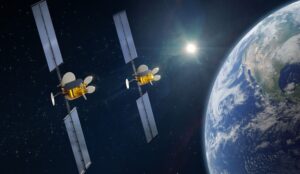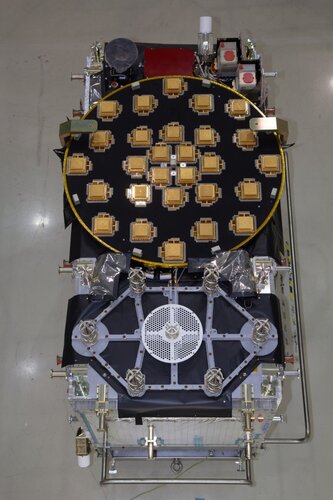A Tale of Planetary Resurrection
Monday, 11 January 2021 02:16 Years after its detection, astronomers have learned that a planet called KOI-5Ab orbits in a triple-star system with a skewed configuration.
Shortly after NASA's Kepler mission began operations back in 2009, it identified what was thought to be a planet about the size of Neptune. Called KOI-5Ab, the planet, which was the second new planet candidate to be found by the mission, was ultimately for
Years after its detection, astronomers have learned that a planet called KOI-5Ab orbits in a triple-star system with a skewed configuration.
Shortly after NASA's Kepler mission began operations back in 2009, it identified what was thought to be a planet about the size of Neptune. Called KOI-5Ab, the planet, which was the second new planet candidate to be found by the mission, was ultimately for A rocky planet around one of our galaxy's oldest stars
Monday, 11 January 2021 02:16 "They should have sent a poet," says Ellie Arroway in the film Contact as, suspended in outer space, she gazes upon a spiral galaxy. Almost all of the planets discovered to date (including the solar system planets) are confined to the plane of the Milky Way, unable to glimpse such a sweeping vista of our galaxy. However, astronomers at the University of Hawai?i Institute for Astronomy (IfA) usin
"They should have sent a poet," says Ellie Arroway in the film Contact as, suspended in outer space, she gazes upon a spiral galaxy. Almost all of the planets discovered to date (including the solar system planets) are confined to the plane of the Milky Way, unable to glimpse such a sweeping vista of our galaxy. However, astronomers at the University of Hawai?i Institute for Astronomy (IfA) usin Astronomers find evidence for planets shrinking over billions of years
Monday, 11 January 2021 02:16 A team of astronomers led by University of Hawai?i Institute for Astronomy (IfA) graduate student Travis Berger has shown that an intriguing class of Neptune-sized planets shrinks over billions of years.
From centuries of studying the planets within our solar system, astronomers have wondered how planets form and evolve to become the ones we observe them today. One of the most surprising f
A team of astronomers led by University of Hawai?i Institute for Astronomy (IfA) graduate student Travis Berger has shown that an intriguing class of Neptune-sized planets shrinks over billions of years.
From centuries of studying the planets within our solar system, astronomers have wondered how planets form and evolve to become the ones we observe them today. One of the most surprising f Astronomers measure enormous planet lurking far from its star
Monday, 11 January 2021 02:16 Scientists aren't usually able to measure the size of gigantic planets, like Jupiter or Saturn, which are far from the stars they orbit. But a UC Riverside-led team has done it.
The planet is roughly five times heavier than Jupiter, hence its nickname GOT 'EM-1b, which stands for Giant Outer Transiting Exoplanet Mass. Though it is nearly 1,300 light years away from Earth, GOT 'EM-1b, or Ke
Scientists aren't usually able to measure the size of gigantic planets, like Jupiter or Saturn, which are far from the stars they orbit. But a UC Riverside-led team has done it.
The planet is roughly five times heavier than Jupiter, hence its nickname GOT 'EM-1b, which stands for Giant Outer Transiting Exoplanet Mass. Though it is nearly 1,300 light years away from Earth, GOT 'EM-1b, or Ke Arecibo observatory helps find possible 'first hints' of low-frequency gravitational waves
Monday, 11 January 2021 02:16 Data from Arecibo Observatory in Puerto Rico has been used to help detect the first possible hints of low-frequency disturbances in the curvature of space-time.
The results were presented at the 237th meeting of the American Astronomical Society, which was held virtually, and are published in The Astrophysical Journal Letters. Arecibo Observatory is managed by the University of Central Flo
Data from Arecibo Observatory in Puerto Rico has been used to help detect the first possible hints of low-frequency disturbances in the curvature of space-time.
The results were presented at the 237th meeting of the American Astronomical Society, which was held virtually, and are published in The Astrophysical Journal Letters. Arecibo Observatory is managed by the University of Central Flo New Space Telescope Will Reveal Unseen, Dynamic Lives of Galaxies
Monday, 11 January 2021 02:16 NASA has selected the University of Arizona to lead one of its four inaugural Astrophysics Pioneers missions. With a $20 million cost cap, the Aspera mission will study galaxy evolution with a space telescope barely larger than a mini fridge. The telescope will allow researchers to observe galaxy processes that have remained hidden from view until now.
NASA has selected the University of Arizona to lead one of its four inaugural Astrophysics Pioneers missions. With a $20 million cost cap, the Aspera mission will study galaxy evolution with a space telescope barely larger than a mini fridge. The telescope will allow researchers to observe galaxy processes that have remained hidden from view until now. NOAA proposes future geostationary constellation with East, West and Center satellites
Sunday, 10 January 2021 19:50
SAN FRANCISCO – NOAA’s National Satellite, Data and Information Service is recommending flying three satellites over the United States in the satellite constellation that will follow the Geostationary Operational Environmental Satellite R Series (GOES-R).
In addition, to operating satellites in orbits similar to those of the current GOES East and GOES West satellites, NOAA recommends placing a third spacecraft over the center of the United States, Pam Sullivan, GOES-R system program director, said Jan.
Researchers find Mars has a Chandler wobble
Sunday, 10 January 2021 17:50
A combined team of researchers from the Jet Propulsion Laboratory, California Institute of Technology and the Royal Observatory of Belgium, has found evidence that Mars has a Chandler wobble. In their paper published in the journal Geophysical Research Letters, the group describes their study of decades of data from Mars probes and what it showed them.
Approximately a century ago, astronomer Seth Carlo Chandler discovered that imperfectly round objects (such as planets) sometimes spin off their axis for periods of time. The phenomenon has come to be known as the Chandler wobble, and has been documented for planet Earth, which veers from its axis for distances up to 30 feet in a pattern that repeats approximately every 433 days. Researchers have suggested that other planets likely have a Chandler wobble, but until now, it has never been observed because measuring it on the planet scale requires precise measurements over many years. In this new effort, the researchers obtained the right kind of data from space probes that orbited Mars over many years: The Mars Reconnaissance Orbiter, the Mars Global Surveyor and Mars Odyssey.
Coronal holes during the solar maximum
Sunday, 10 January 2021 16:28
NASA Highlights Astrophysics Missions at ‘Super Bowl of Astronomy’
Sunday, 10 January 2021 14:54 Experts from across NASA will discuss topics ranging from black holes to exploding stars to planets beyond our solar system at the 237th meeting of the American Astronomical Society (AAS).
Experts from across NASA will discuss topics ranging from black holes to exploding stars to planets beyond our solar system at the 237th meeting of the American Astronomical Society (AAS). Intelsat orders two satellites from Airbus
Sunday, 10 January 2021 11:58
WASHINGTON — Intelsat has ordered two geostationary communications satellites from Airbus Defence and Space that will support the satellite operator’s aviation connectivity business.
The companies announced Jan. 8 the order of two spacecraft from Airbus’ OneSat family of fully reconfigurable geostationary satellites.
Cosmic neon lights
Sunday, 10 January 2021 10:00 Image:
Cosmic neon lights
Image:
Cosmic neon lights How far we've come: Galileo’s 500th ESA Engineering Board
Sunday, 10 January 2021 07:34
The end of 2020 marked a notable milestone for Europe’s Galileo First Generation, as the programme chalked up its 500th ESA Engineering Board.
SpaceX Dragon capsule to make first of its kind science splashdown
Saturday, 09 January 2021 09:55 By capsule, helicopter, boat, plane, and car, space station science experiments are about to make a first of a kind journey back to researchers on Earth.
On Jan. 11, the SpaceX cargo Dragon spacecraft carrying out the company's 21st commercial resupply services (CRS-21) mission for NASA undocks from the International Space Station, heading for splashdown off
By capsule, helicopter, boat, plane, and car, space station science experiments are about to make a first of a kind journey back to researchers on Earth.
On Jan. 11, the SpaceX cargo Dragon spacecraft carrying out the company's 21st commercial resupply services (CRS-21) mission for NASA undocks from the International Space Station, heading for splashdown off Chang'e 4 probe resumes work for 26th lunar day
Saturday, 09 January 2021 09:55 The lander and rover of the Chang'e-4 probe have resumed work for the 26th lunar day on the far side of the moon.
The lander woke up at 3:13 a.m. on Friday (Beijing time), and the rover Yutu-2, or Jade Rabbit-2, woke up at 10:29 a.m. on Thursday, according to the Lunar Exploration and Space Program Center of the China National Space Administration.
Landing on the moon on Jan. 3, 2019
The lander and rover of the Chang'e-4 probe have resumed work for the 26th lunar day on the far side of the moon.
The lander woke up at 3:13 a.m. on Friday (Beijing time), and the rover Yutu-2, or Jade Rabbit-2, woke up at 10:29 a.m. on Thursday, according to the Lunar Exploration and Space Program Center of the China National Space Administration.
Landing on the moon on Jan. 3, 2019 
